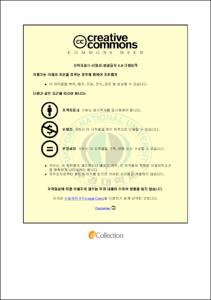2009 개정 교육과정에 따른 중학교 영어 교과서 대화문의 의사소통 기능 분석
- Alternative Title
- An Analysis of the Communicative Functions Presented in the Dialogues of Middle School English Textbooks: Based on the 2009 Revised National Curriculum
- Abstract
- The purpose of this study is to analyze the frequencies of communicative functions in middle school English textbooks. For this study, three kinds of newly-published textbooks from 1st grade to 3rd grade were randomly selected. The study analyzed 11 broad and 122 specific communicative functions and expressions based on criteria prescribed in the 2009 revised national curriculum. The questions stated in this study are as follows: First, what are the target communicative functions introduced in each unit of the middle school English textbooks? Second, what kinds of communicative functions, excluding target communicative functions, are presented in the dialogues of the listening scripts of the textbooks? Third, are the target communicative functions sufficiently recycled in the dialogues in the first grade of the English textbook? The results of this study show that the communicative functions of ‘giving and requesting information’, ‘doing social activities’ and ‘expressing emotions’ are presented most frequently as the target communicative functions in each unit of the English textbooks. In contrast, the communicative functions of 'expressing moral attitudes' and 'expressing factual attitudes' are rarely presented. Regarding the second research question, the frequencies of the communicative functions presented in the dialogues in the textbooks are similar to those of target communicative functions. In addition, the target communicative functions introduced in each unit are not sufficiently recycled in the dialogues except for the functions of 'doing social activities' and 'giving and requesting information'. This study shows that the communicative functions are not presented in a balanced way as following the revised curriculum and not recycled sufficiently enough to acquire completely the communicative functions. Therefore, the communicative functions need to be introduced in a more balanced way and with more repetition so that the students have more opportunities to improve their communicative competence.
- Issued Date
- 2014
- Awarded Date
- 2014. 8
- Type
- Dissertation
- Publisher
- 부경대학교
- Alternative Author(s)
- Park, Su Jung
- Affiliation
- 교육대학원
- Department
- 교육대학원 영어교육전공
- Advisor
- 오준일
- Table Of Contents
- ABSTRACT ⅰ
Ⅰ. 서 론 1
1.1 연구의 필요성 및 목적 1
1.2 연구 과제 4
1.3 연구의 제한점 4
Ⅱ. 이론적 배경 6
2.1 의사소통 능력 개념과 기능 분류 6
2.1.1 의사소통 능력의 개념 6
2.1.2 의사소통 기능의 분류 8
2.1.3 의사소통기능 중심으로 살펴본 2009 개정 교육과정 11
2.2 영어 교과서 및 대화문의 의의 13
2.3 반복 학습의 중요성 - 나선형 17
2.4 선행 연구 18
Ⅲ. 연구 내용 및 방법 21
3.1 분석 대상 21
3.2 분석 기준 및 분석 방법 23
Ⅳ. 분석 결과 및 논의 27
4.1 학년별 단원 목표 의사소통 기능 분석 27
4.1.1 1학년 교과서별 목표 의사소통 기능 분석 27
4.1.2 2학년 교과서별 목표 의사소통 기능 분석 29
4.1.3 3학년 교과서별 목표 의사소통 기능 분석 32
4.1.4 전체 학년 교과서별 목표 의사소통 기능 분석 34
4.2 학년별 목표 의사소통 기능 외 부차적 의사소통 기능 분석 36
4.2.1 1학년 교과서별 부차적 의사소통 기능 분석 36
4.2.2 2학년 교과서별 부차적 의사소통 기능 분석 38
4.2.3 3학년 교과서별 부차적 의사소통 기능 분석 40
4.2.4 전체 학년 교과서별 부차적 의사소통 기능 분석 42
4.3 1학년 교과서 단원별 목표 의사소통 기능 반복 분석 44
Ⅴ. 결론 및 제언 47
참고문헌 51
분석대상교과서 55
부록 57
1. 2009 개정 의사소통 기능 분류 57
2. 1학년 교과서별 부차적 의사소통 기능 하위영역 분석결과 58
3. 2학년 교과서별 부차적 의사소통 기능 하위영역 분석결과 61
4. 3학년 교과서별 부차적 의사소통 기능 하위영역 분석결과 64
- Degree
- Master
- Files in This Item:
-
-
Download
 2009 개정 교육과정에 따른 중학교 영어 교과서 대화문의 의사소통 기능 분석.pdf
기타 데이터 / 784.73 kB / Adobe PDF
2009 개정 교육과정에 따른 중학교 영어 교과서 대화문의 의사소통 기능 분석.pdf
기타 데이터 / 784.73 kB / Adobe PDF
-
Items in Repository are protected by copyright, with all rights reserved, unless otherwise indicated.